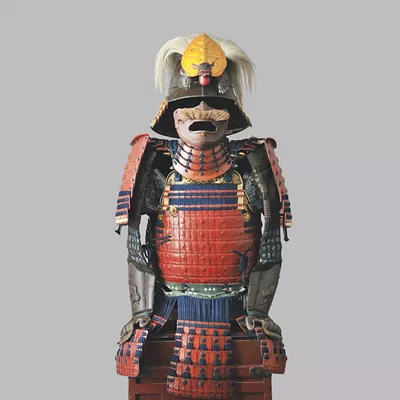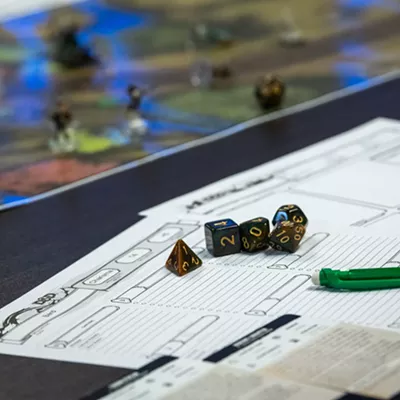Catherine Leroy may not be a household name like Ansel Adams or Annie Leibovitz, but there's no question her work as an international war photographer was any less profound.
Leroy, a French-born photographer, got her start in the unforgiving jungles of Vietnam at age 21. Her heart-wrenching photos of U.S. soldiers, Vietnamese civilians and even the enemy, appeared in the pages of major national and international newspapers and magazines, and on TV, yet her legacy remains largely unknown.
Spokane-based author and former journalist Mary Cronk Farrell hopes that will soon change as more young people pick up her newest book, Close-Up On War: The Story of Pioneering Photojournalist Catherine Leroy in Vietnam.
The nonfiction title for young adult readers tells the story of how and why Leroy left the comfort and safety of home in France to head into the heat of conflict in Vietnam, with big goals of becoming an award-winning combat photographer. For Farrell, telling Leroy's story was a calling. Since publishing her first book 18 years ago, she's been personally propelled to research marginalized and lesser-known — yet truly courageous — women in history as subjects of her books.
"All of my books have started out as something I discovered and was like, 'Oh my gosh, that should be in a book — why don't we know about that?'" Farrell says. "My other book, Pure Grit, was about nurses helping POWs held by the Japanese, and my other labor [rights] story is about Fannie Sellens, who was shot to death on the picket line in front of a huge crowd of witnesses."
Farrell is always on the hunt for compelling stories about women in history who fought to change the status quo and made serious personal sacrifices for the benefit of others, even if not many remember their legacies today. On her website (marycronkfarrell.net), she also publishes a weekly series about women who fit this definition.
"With Catherine, I just knew a little bit about her and started Googling her," Farrell recalls. "The more I read about her, it was another case of 'Why don't we know about this woman?' I hadn't really planned to do this book — I was planning to focus on my fiction — but then I found her and thought, 'I have to do this.'"
Unfortunately, not every woman she stumbles across who lived through a pivotal period of history can become the subject of a several-hundred page book. Most of the time, it's due to a lack of primary resources or direct, living connections to a person.
But with Leroy, Farrell discovered something special. While Leroy was living in Vietnam and photographing the war from 1966 to 1968, she wrote frequent letters to her parents. Preserved and translated by a French organization, these letters describe Leroy's experiences from the mundane to the traumatic, including her recovery on a hospital ship after being wounded in combat.
"I started reading some of the letters, and it was like you could read her day-to-day thoughts," Farrell says. "One of the reviewers [of the book] criticized it for the letters being too [simple], like 'Mom, please send me a bikini,' but [Catherine] also wasn't totally honest about what was going on, so often they were kind of light. I think teenagers would be interested in seeing her as a real person."
Because Leroy's letters and photos were both accessible digitally, most of Farrell's research for the book was possible without travel. Along with her recounting of Leroy's experience, Farrell weaves in historical context of the Vietnam War and what happened while Leroy was there.
"One thing I love is that she was really honest about her ambition," Farrell says. "She was a humble person, but to herself and to her parents, she was not afraid to say what she wanted, and she wanted to be a successful photographer, and she wanted to win awards. But one reason she faded is that she wasn't a big self-promoter like some of the male photographers were."
Farrell's journey into the world of publishing began in the early 2000s, after she stepped away from a decadelong career as a TV reporter for local stations in Spokane and Seattle.
"I always wanted to write books for kids because I was a great reader as a kid," she says.
Breaking into the book publishing world, however, presented many challenges.
"It's not an easy transition," Farrell says. "It's a different kind of writing, and I'd thought, 'Oh, I'm a good writer; I'll just whip out a book!' The other thing about publishing is that it's just so difficult to break in. Sometimes it takes years."
Her first title, Fire in the Hole, published in 2004, is historical fiction based around the oft-violent miners union strikes in North Idaho's Silver Valley at the turn of the 20th century. Farrell had covered the area as a TV reporter and was fascinated when she began researching its legacy.
In the time since, Farrell says the publishing world has, thankfully, evolved.
"Around 2005, when I wanted to write books about women, the feedback I got was like, 'Well, this woman isn't well-known enough,'" she says. "I remember at a conference, they told people it was better to have a new, different book about George Washington than to have a book about some unknown woman. Thank god that's been changing. The push for more women's stories and more diversity [in publishing] is now in full swing."
While Close-Up On War is geared toward a tween-to-teenage readership, adults can also enjoy it. It's a refresher on Vietnam, and features rare, firsthand accounts of a woman. For her intended audience, though, Farrell hopes two takeaways stick.
"First is Catherine — she had a lot of ambition and became very successful in a very short amount of time. She worked hard. To be a woman in that situation, she had to do everything better than the men who were her competitors," Farrell says.
"But the most important thing about Catherine's story is that it demonstrates the crucial role of journalism. I hope young people will see that journalists actually risk their lives to photograph and write about what they see happening in front of them, and the truth of that."






















